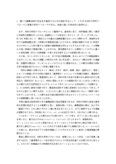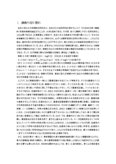代表キーワード :: 理工学
資料:680件
-
 Investin Sequence
Investin Sequence
- From the question above, we can see that for n = 1, we will get 1 x 1! by the equation. And for n = 2, we have 2 x 2! and identically, we have 3 x 3!, when n = 3. There is a simple pattern. So, we can understand that the n x n! is the formula for the nth ter...
 1,320 販売中 2005/07/30
1,320 販売中 2005/07/30- 閲覧(1,104)
-
 Rotating Angles
Rotating Angles
- A rectangle OABC rotates counter clockwise about the point O as shown in the diagram below, which is not drawn to scale Initially O is at (0,0), A is at (4,0), B is at (4,3), C is at (0,4). The diagram shows the rectangle after it has rotated through 20 ...
 1,320 販売中 2005/07/30
1,320 販売中 2005/07/30- 閲覧(1,150)
-
 Observing Oxidation and Reduction Reactions
Observing Oxidation and Reduction Reactions
- *Station1; test tube, copper (II) sulfate, small piece of zinc *Station2; test tube, iron (III) chloride, small piece of zinc, 5 drops of potassium hexacyanoferrate *Station3; test tube, 1.0M hydrochloric acid, small strip of magnesium metal, wooden splint,...
 550 販売中 2005/07/30
550 販売中 2005/07/30- 閲覧(1,108)
-
 Population Growth
Population Growth
- First, the graph of the population versus time is about direct proportional. However, if we see the changes (difference between years), we can see the some differences. First, between 1801 and 1811, there is least population increase in the chart. Between 1811...
 660 販売中 2005/07/30
660 販売中 2005/07/30- 閲覧(1,195)
-
 材料力学と破壊力学
材料力学と破壊力学
- まず、材料力学的アプローチについて整理する。歴史的に見て、材料強度に関して最初に系統的な実験を行ったのは、絵画家としても有名なレオナルド・ダ・ヴィンチであった。約500年前において、現在のような優れた試験装置がなかったにも関わらず、独創的な手作りの試験装置を用いて...
 550 販売中 2005/07/29
550 販売中 2005/07/29- 閲覧(6,125)
-
 金属材料の強度
金属材料の強度
- 降伏という用語の意味は、弾性を失って、荷重を取り去っても原形に戻らない塑性領域に入ることである。応力がある値を超えると塑性領域に入るのだが、そのときの応力を降伏応力と呼ぶ。つまり、問題文の意図は、換言すれば、降伏応力の実測値が理論値よりも低くて強度が弱いのはな...
 550 販売中 2005/07/29
550 販売中 2005/07/29- 閲覧(2,810) コメント(1)
-
 コンピュータの並列処理
コンピュータの並列処理
- 素粒子物理学などの計算物理学や気象予報、地球の総合的な将来像のシミュレーションといった、大規模な計算を必要とする分野ではいま、非常に高度な計算能力が計算機に対して求められている。従来のマイクロプロセッサは1つのCPUしか持たず、キャッシュメモリに依存しているため、...
 550 販売中 2005/07/29
550 販売中 2005/07/29- 閲覧(1,516) コメント(1)
-
 インテリジェントセンサ
インテリジェントセンサ
- 現在、製造業を中心とする産業界でロボットは、これまで人間が行ってきた労働を取って代わって担っている。我々はそのことを承知してはいるが、日常生活のレヴェルではロボットはまだそれほど普及していない。鉄腕アトムやドラえもんなど、人間の心を持ったヒューマンなロボットに...
 550 販売中 2005/07/29
550 販売中 2005/07/29- 閲覧(1,948) コメント(1)
-
 生体計測と信号処理
生体計測と信号処理
- デジタルカメラやホームページの画像など、いわゆるデジタル画像に接する機会が多いので、まず画像処理に関して実際的に利用する立場から整理しておきたいと思う。 画像圧縮については?でも述べたが、圧縮には圧縮前の画像を完全に再現できる可逆性のものと完全には再現できない...
 550 販売中 2005/07/29
550 販売中 2005/07/29- 閲覧(1,712)
-
 非同期計算システム
非同期計算システム
- コンピュータやその他のディジタル電子機器を起動させるマイクロプロセッサのシステムには同期式と非同期式があるが、現在は全て同期式に依っている。 同期式とは、クロックと呼ばれる特別な方形波信号に同期して動作を進めることである。…非同期式では、前述したようにクロック...
 550 販売中 2005/07/29
550 販売中 2005/07/29- 閲覧(1,506)















